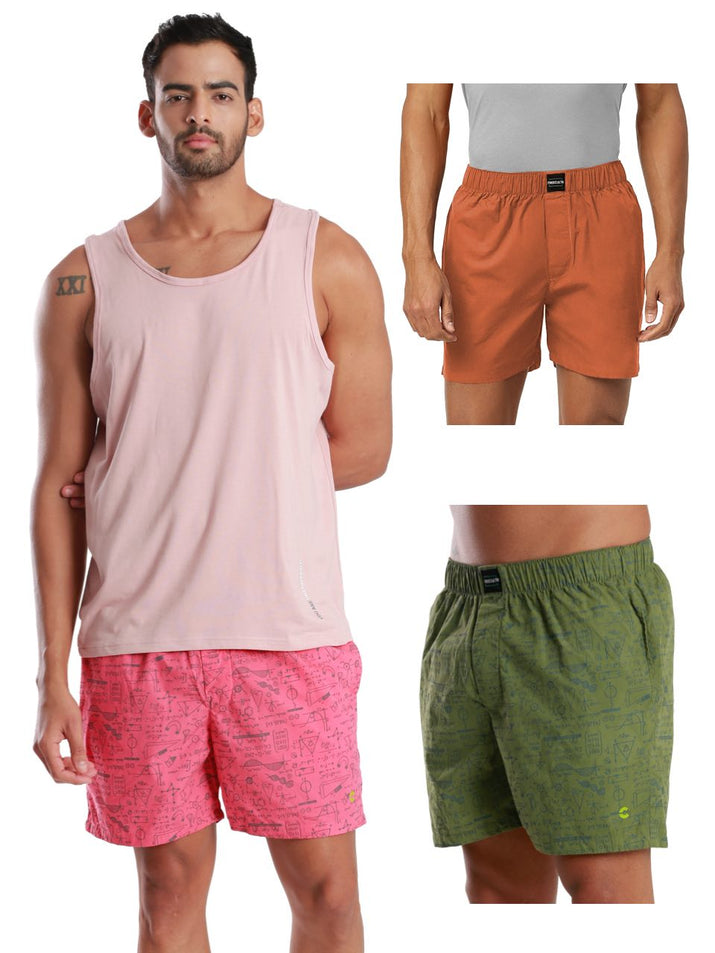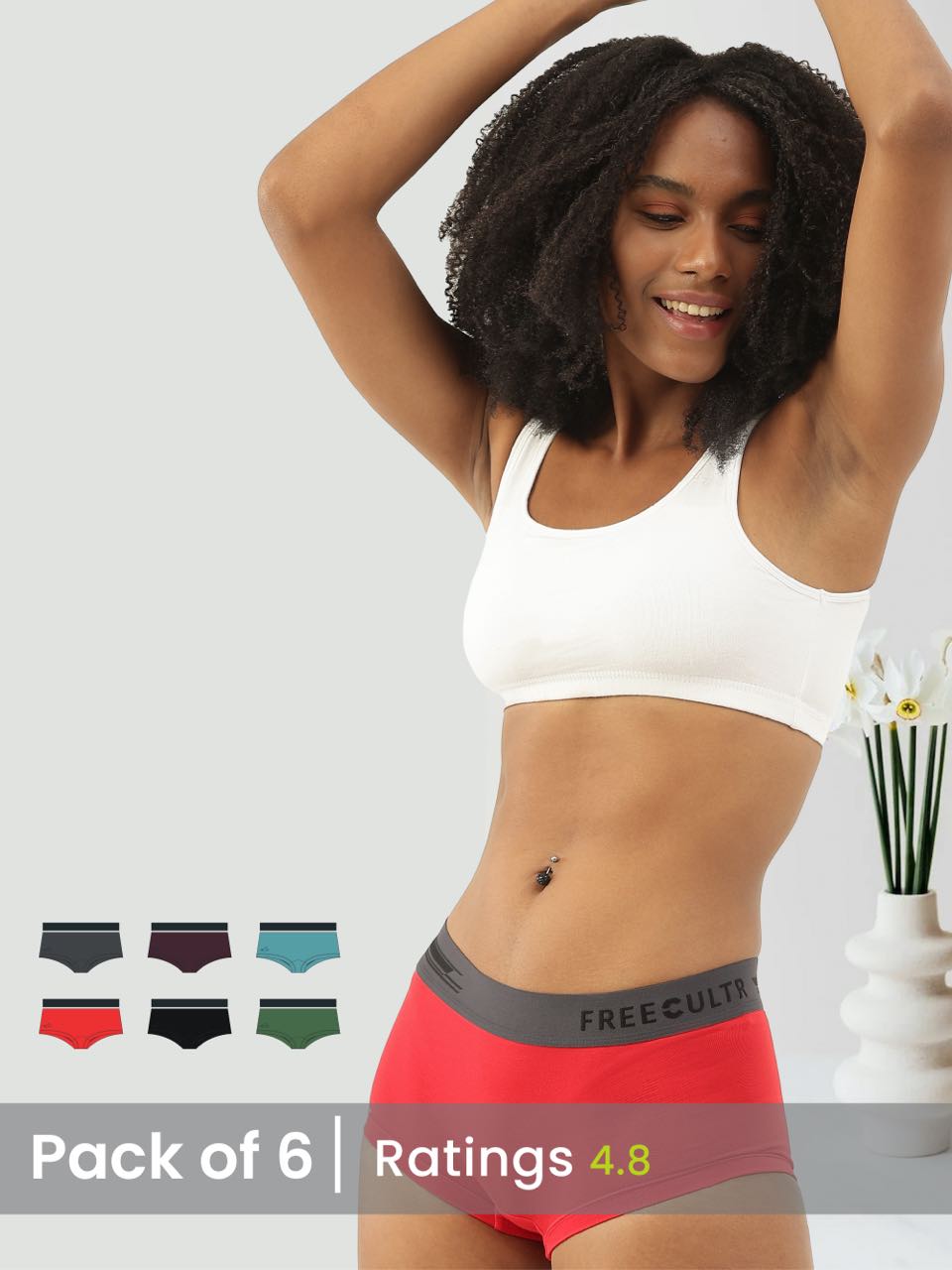The quest for truly comfortable undergarments often ends in frustration, as a "medium" from one brand can drastically differ from another, leading to pinching, bunching, or an unsupportive fit. Beyond mere aesthetics, an ill-fitting foundation negatively impacts circulation, causes chafing. Diminishes overall well-being throughout the day. With the rise of performance fabrics like modal and bamboo blends, designed for breathability and stretch, understanding precise measurements has become even more critical to fully leverage their benefits. Navigating the nuances of waist and hip dimensions via a comprehensive underwear size chart empowers you to transcend generic sizing, ensuring a tailored fit that enhances not just comfort. Also garment longevity and the smooth drape of outer clothing.

Why Underwear Fit Matters More Than You Think
Ever had one of those days where your underwear just feels... Off? Maybe it's digging in, bunching up, or constantly riding down? We've all been there! It might seem like a small thing. The truth is, the fit of your underwear plays a massive role in your all-day comfort, confidence. Even your health. Ill-fitting undies can lead to chafing, irritation, poor circulation. Just a general sense of unease that can subtly impact your entire day. Think about it: it's the first thing you put on and the last thing you take off. Shouldn't it feel amazing?
Ignoring the importance of a proper fit is like wearing shoes that are a size too small or too big – it's uncomfortable, inefficient. Can cause problems down the line. That's why understanding how to use an underwear size chart is a game-changer. It's not just about looking good; it's about feeling good, from the inside out.
Ditching the Guesswork: Understanding the Underwear Size Chart
For too long, many of us have relied on guesswork when buying underwear. We grab the size we think we are, or maybe the size we wore last year. But just like our bodies change, so do sizing standards across brands. This is where an underwear size chart becomes your best friend. It's a simple, yet incredibly powerful tool that provides specific measurements (like waist and hip) corresponding to a brand's sizing (S, M, L, or numerical sizes).
Instead of hoping for the best, an underwear size chart empowers you to make an informed decision, ensuring you get a pair that truly fits your unique body shape. It takes the mystery out of online shopping and saves you the hassle of returns. Plus, when you know your measurements, you can confidently navigate different brands, even if their "Medium" isn't quite the same as another's.
How to Measure Yourself Like a Pro (It's Easier Than You Think!)
Ready to unlock your perfect fit? All you need is a flexible measuring tape and a few minutes. Here’s how to get those crucial numbers for the underwear size chart:
- Waist Measurement Find your natural waistline. This is usually the narrowest part of your torso, just above your belly button. Wrap the tape measure around your waist, keeping it snug but not tight. Breathe out naturally and note the measurement.
- Hip Measurement This is often the most vital measurement for underwear. Stand with your feet together and measure around the fullest part of your hips and glutes. Make sure the tape is level all the way around.
- Rise Measurement (Optional but Helpful) While less common on a standard underwear size chart, knowing your preferred rise can guide your style choice. Measure from the crotch seam up to your natural waistline (for high-rise) or wherever you prefer the waistband to sit (for low-rise).
- Inseam/Leg Opening (For Boxers/Trunks) For longer styles like boxers or boxer briefs, some brands might include a leg opening circumference or an inseam measurement. For inseam, measure from the top of your inner thigh down to where you want the leg to end. For leg opening, measure around the fullest part of your thigh where the underwear leg would sit.
Decoding the Underwear Size Chart: What Those Numbers Mean
Once you have your measurements, it's time to compare them to the underwear size chart provided by the brand. Most charts will list a range of measurements for each size. Here’s a general example of what you might see:
| Size | Waist (inches) | Hips (inches) |
|---|---|---|
| XS | 24-26 | 32-34 |
| S | 27-29 | 35-37 |
| M | 30-32 | 38-40 |
| L | 33-35 | 41-43 |
| XL | 36-38 | 44-46 |
| XXL | 39-41 | 47-49 |
- Brand Variation Remember, every brand's underwear size chart can be a little different. A "Medium" from one brand might be a "Small" or "Large" in another. Always check the specific chart for the brand you're buying.
- Falling Between Sizes If your measurements fall between two sizes on the underwear size chart, consider your preference. For a tighter, more supportive fit, go with the smaller size. For a more relaxed, comfortable fit, size up. If you're buying briefs or anything with a defined leg, prioritize your hip measurement. For boxers, waist is often key.
- International Sizing Some brands might use EU, UK, or other international sizing. The underwear size chart will usually provide conversions. Again, rely on the actual body measurements.
Beyond the Basics: Style, Fabric. Personal Preference
While the underwear size chart is foundational, other factors also play a huge role in your ultimate comfort:
- Underwear Styles Different styles offer different levels of coverage and support.
- Briefs High support, minimal leg coverage. Fit is crucial around the waist and crotch.
- Boxer Briefs/Trunks More leg coverage, good support. Focus on waist and thigh measurements.
- Boxers Loose, breathable. Waist measurement is primary.
- Thongs/G-strings Minimal coverage. Waist and hip measurements are still essential for comfort around the waistband.
- Bikini/Hipster/Boy Short Varying coverage for women. Hip measurement is key, along with waist for hipsters/bikinis.
- Fabric Choices The material directly impacts stretch, breathability. Feel.
- Cotton Breathable, soft, absorbent. Less stretch, so precise sizing from the underwear size chart is crucial.
- Modal/MicroModal Incredibly soft, stretchy. Moisture-wicking. Offers more give if you're between sizes.
- Synthetic Blends (Nylon, Spandex, Polyester) Durable, stretchy, often moisture-wicking and quick-drying. Great for active wear, can be more forgiving with slight size variations.
- Silk Luxurious, breathable. Delicate. Often has less stretch, so adhere closely to the underwear size chart.
- Personal Preference Some people prefer a snug, supportive fit, while others like a looser, more relaxed feel. Your personal comfort is paramount. Use the underwear size chart as a guide. Also listen to your body.
Real-World Scenarios: When Your Underwear Doesn't Feel Right
You've probably experienced some of these tell-tale signs of ill-fitting underwear:
- Chafing or Red Marks If your underwear leaves red marks on your skin or causes irritation, it's likely too small or the fabric/seams are abrasive.
- Bunching or Rolling If fabric gathers uncomfortably or the waistband rolls down, it could be too big or the wrong style for your body shape.
- Digging In A waistband or leg opening that digs into your skin is a clear sign it's too tight.
- Sagging or Baggy If your underwear is constantly falling down or feels loose and unsupported, it's too big.
- Lack of Support Especially for men's underwear, inadequate support can lead to discomfort during daily activities.
I remember a friend who swore by a certain "size L" for years, purely out of habit. He'd complain about constant bunching and adjusting throughout the day. When he finally took a moment to measure himself and consult a brand's specific underwear size chart, he realized he was actually an "XL" in that particular brand. The difference, he said, was like night and day. He went from constantly being aware of his underwear to forgetting he was even wearing it – the ultimate goal of comfortable undergarments!
Tips for Shopping Smart: Online vs. In-Store
Armed with your measurements and understanding of the underwear size chart, you're ready to shop like a pro:
- Always Check the Brand's Underwear Size Chart This cannot be stressed enough. Don't assume. A quick click on the product page can save you a world of discomfort.
- Read Reviews Many online reviews include comments on fit – whether items run true to size, small, or large. This can be a valuable second opinion.
- grasp Return Policies Due to hygiene reasons, underwear is often non-returnable. This makes getting the size right the first time even more crucial.
- Consider Multi-Packs If you're trying a new brand, sometimes buying a smaller multi-pack first can be a good test run before investing in a larger quantity.
The Underwear Size Chart and Your Health
Beyond comfort, proper fitting underwear contributes significantly to your overall well-being:
- Skin Health Underwear that's too tight can restrict airflow, trap moisture. Lead to skin irritation, rashes, or even yeast infections, especially in warmer climates. Conversely, excessively baggy underwear can cause chafing.
- Circulation Tight waistbands can constrict blood flow, leading to discomfort and potentially impacting circulation over time.
- Hygiene A good fit ensures the fabric lies properly against the body, helping to wick away moisture and maintain a healthier environment, especially in intimate areas.
Taking a few minutes to measure yourself and consult an underwear size chart isn't just about buying clothes; it's an investment in your daily comfort, confidence. Health. So go ahead, measure up. Experience the incredible difference a perfect fit can make!
Conclusion
You’ve now unlocked the secret to true all-day comfort: a perfectly fitted pair of underwear. Remember, the journey begins with accurate measurements; don't just guess your size, take a moment to confirm it. I once dismissed underwear fit as trivial, only to discover that the right size in a breathable fabric, like a bamboo blend, dramatically elevates comfort, eliminating those constant adjustments or the annoying bunching some experience, especially with active lifestyles. Embrace the actionable tip to experiment with styles—perhaps a trunk for its modern fit, or a classic brief for enhanced freedom of movement, both now widely available in innovative, moisture-wicking materials that weren't common even a few years ago. Think of your underwear as the foundational layer for your entire day; it's the invisible support that dictates your overall comfort and confidence. Invest wisely in this essential garment. Allow yourself the profound satisfaction of underwear that truly moves with you, not against you.More Articles
Men's Brief – Breathable Fabric & Enhanced Freedom of MovementMen's Brief – Superior Support & All-Day Comfort
Trunks for Men – Lightweight Comfort & Modern Fit
Men's T-shirt – Everyday Style & Soft Feel
FAQs
Why bother with an underwear size chart?
Using an underwear size chart ensures you get a perfect, comfortable fit that prevents chafing, pinching, or sagging. It also helps your outer clothes look better and provides all-day comfort without distractions.
How do I actually measure myself for underwear?
You'll typically need your waist measurement (around your natural waistline, usually above your belly button) and your hip measurement (around the fullest part of your hips). For some styles like boxer briefs, you might also consider your thigh circumference. Always use a soft tape measure and stand relaxed.
What if my measurements fall between two sizes on the chart?
If you're looking for a snugger fit or more support, you might consider going down a size. But, for most people, especially for general comfort or if you prefer a little more room, it's usually better to size up. Think about your personal comfort preference for the specific style.
Are underwear sizes consistent across different brands?
Unfortunately, no. Sizing can vary quite a bit between brands, much like jeans or shoes. A 'medium' in one brand might be a 'large' or 'small' in another. Always check the specific brand's size chart before making a purchase to ensure you get the right fit.
Does the material of the underwear affect how it fits or feels?
Absolutely! Stretchy materials like spandex blends will adapt more to your body, offering flexibility and movement. Cotton offers a more traditional, breathable feel but might have less give. Some fabrics are designed for moisture-wicking or compression, which also affects the fit and overall comfort experience. Consider the material for both fit and your daily activities.
I feel like my current underwear isn't comfortable. Could it be the wrong size even if I bought my usual?
Very likely! Our bodies can change over time due to various factors, so a size that fit perfectly a year ago might not be right today. Plus, as mentioned, brands vary. Re-measuring yourself and consulting a size chart is the best way to ensure maximum comfort and avoid discomfort from ill-fitting underwear.
Why is finding the 'perfect fit' for underwear such a big deal for daily comfort?
Underwear is the first layer against your skin and is worn all day long. A poor fit can lead to constant irritation, chafing, digging, or awkward adjustments, which is incredibly distracting and uncomfortable. A perfect fit means you barely notice it's there, allowing you to move freely, feel confident. Focus on your day without any clothing-related discomfort.






